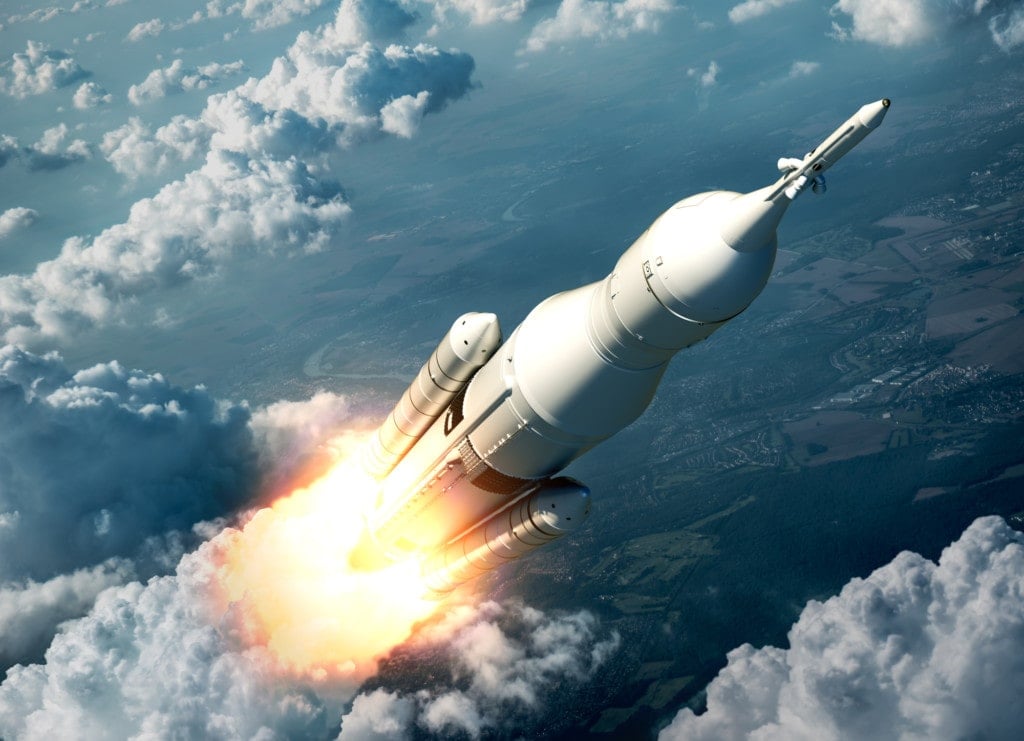Space flights now and in the future will carry passengers, including William Shatner. Would you go, too?
Are you ready for your trip to space? Can you imagine looking out a window and seeing Earth from 30-50 miles up? Do you dream of cruising through the cosmos? That is, without the years-long commitment and training that goes into becoming an astronaut. Then, buckle up – we've got some great news for you. Your options for getting closer to the stars are no longer limited to your local observatory, telescope, or movie theater.
Space tourism isn't just a catchphrase for the hopes and dreams of billionaires who want to send people, including themselves, up in rockets. Visiting the outer limits is becoming more and more of a reality.
At this point, it's primarily for the rich and the richer. Making Trekkie dreams come true, Captain Kirk, William Shatner (at age 90!), is booked on an upcoming Blue Origin launch.
But recent progress means that space tourism is ramping up, becoming more affordable, and available to more people. How is it happening? Take a look at how capitalism gives civilian space travel the rocket boost it needs to get off the ground.
Plus, learn everything you need to know about SpaceX, all in one infographic that’s out of this world.
What Space Missions Are Currently Happening?
Years ago, it was easy to know what space missions were in progress because there weren't very many. Between NASA and the Russian missions, there wasn't much information to track. Everyone is familiar with the launches of the Sputnik, Gemini, Apollo, and the Soyuz, followed by the Space Shuttle program. For a while, millions watched every launch and landing, and everything in between, on television.
Then the Space Shuttle program retired. New programs stepped up. They sent astronauts, supplies, experiments, and equipment to the International Space Station. Then things got more complicated.
Who was flying where and when was a little harder to keep track of back then. Not to mention, it's so much more common than it used to be, the novelty has worn off a bit.
But for the space nerds among us, that's not the case at all. Many space enthusiasts know what's in development, what's launching, who's up in the air, and what the success rates are. For the rest of us, we need a little more information.
Currently, space missions are unfolding every single day.
The International Space Station
The ISS has been orbiting Earth since the first segment launched in 1998. It's been a continuously manned space mission since the first astronauts boarded. Bill Shepherd, Yuri Gidzenko, and Sergei Krikalev boarded it in 2000. They spent several months aboard the station as it sped around Earth at 15,500 miles per hour. Since these first pioneers resided on the station, 220 astronauts from 17 different countries have visited and lived on the ISS. But that's not all that's going on out there.
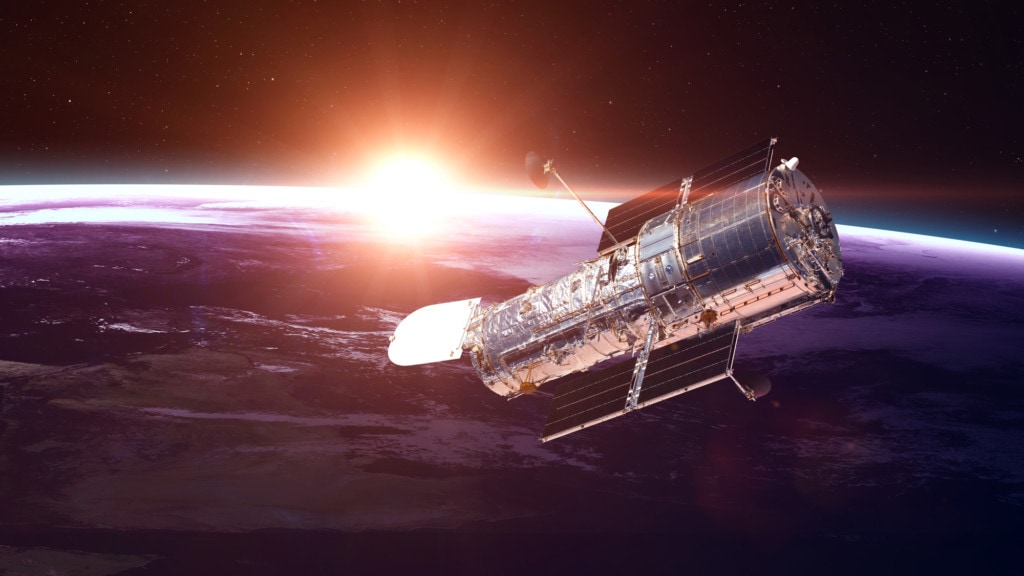
Take a look at some other vital projects happening around our solar system that have been working for decades:
Hubble Space Telescope
Launched from the space shuttle Discovery in 1990. Hubble is still fully functional and has sent over 1.4 million observations and images to Earth. In addition to the study of our solar system, it's also helped us see places in our Universe that are 13.4 billion light-years away. We've had a glimpse into forming galaxies, the expanse of black holes, and the history of the Universe.
Juno Spacecraft
Launched in 2011. This mission's goal is to see Jupiter's clouds below to learn more about the gas giant and how our solar system came to be.
Mars Rovers
Sojourner, Spirit, Opportunity, and Curiosity are the Mars Rovers that have landed on the red planet so far. They send back massive amounts of data. The program first launched Sojourner in 1997. Spirit and Opportunity in 2003, and Curiosity in 2011. Curiosity is still operational today.
On February 18, 2021, NASA's Perseverance rover should land in the Jezero Crater on Mars. This exploratory project has been in the works for over a decade.
"Perseverance can send back simple "tones" or communications without data attached to it, and an orbiting spacecraft known as Mars Atmospheric and Volatile EvolutioN (MAVEN) can send back a little more data a few hours after landing," reports Space.com.
Mars Odyssey
In orbit around Mars since 2001, it collects information on the planet's climate and geology.
That's all great, but isn't there anything recent happening in the space programs around the world? What's happening with NASA spaceflight now? We're so glad you asked.
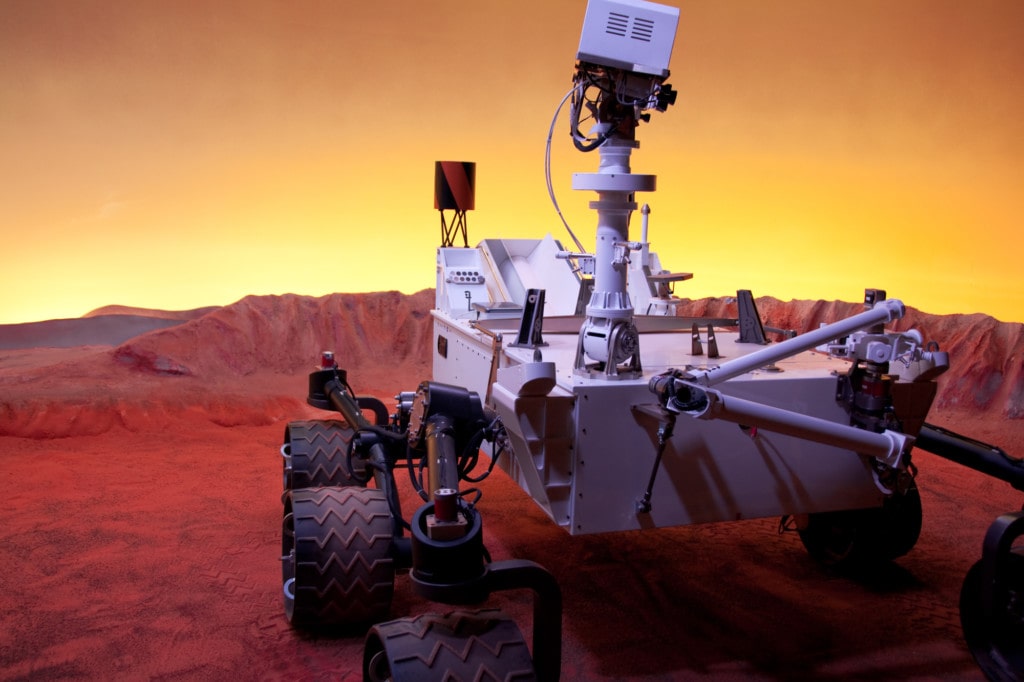
Today’s Space Missions
Current missions include everything from space telescope launches to putting weather-monitoring satellites in orbit. We've also got disturbance reduction system experiments and infrared survey explorers. But if you look closely at the bulleted list of projects above, you might notice a common thread. They're all sponsored and run by NASA, which means they're all paid for by the government. Government support can help launch (sorry!) big projects. In fact, space exploration would have been impossible without it.
But as a government agency, NASA and the Space Shuttle program were at the mercy of the U.S. government. Congress made decisions on funding (or not funding) every expense and mission. They set the pace for all forward progress with space exploration. This ultimately led to the decision to retire the shuttle program.
This shift in operations opened the doors for commercial opportunities. That's why we have such ground-breaking space experiments and discoveries in progress at this very moment.
Introducing the NASA Commercial Crew Program
The priority was to reach the ISS. With the program in full swing, abandoning it was never an option. There had to be a way to supply the station with essentials, experiments, equipment, and people. There was also the desire to continue other exploration that included the need for access to low-Earth orbit. This led to NASA's introduction of the CCP, or the Commercial Crew Program.
The space shuttle program ended in 2011. Closing that door opened another. Capitalists jumped on the opportunity. When the government said space exploration was no longer worth funding, capitalists begged to differ. No surprise, capitalists are making great strides toward reliable, safe, and cost-effective ways to get into Space.
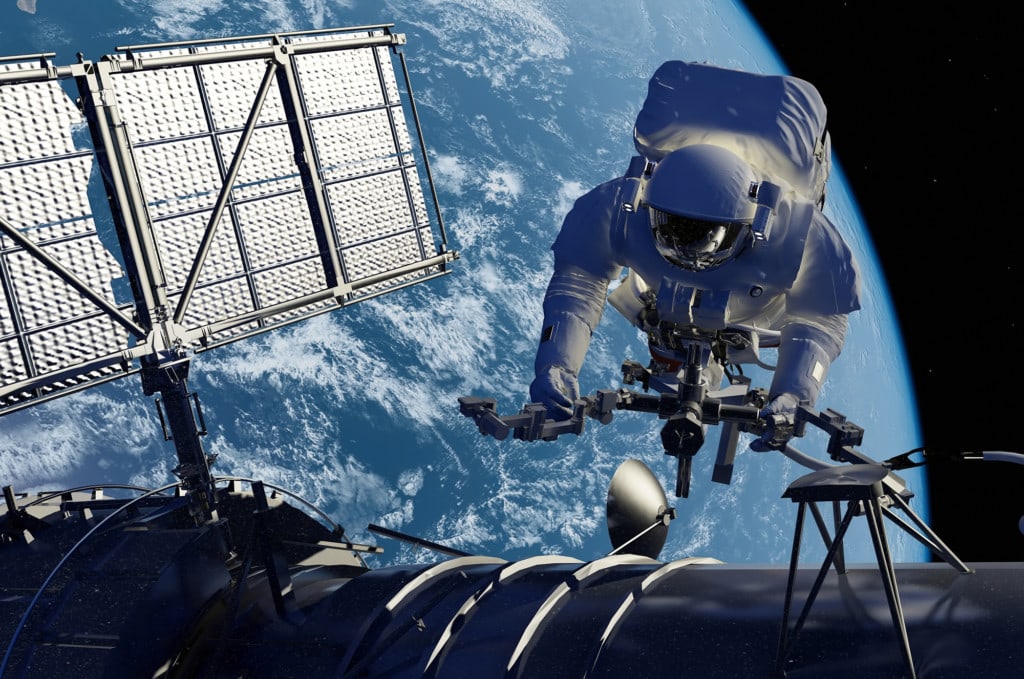
Capitalists Go to Infinity and Beyond
Sometimes, the government can get things done. They got a man on the moon. But the government also often makes matters worse. There's bureaucracy and red tape, not to mention a substantial number of people involved in every decision. This makes the process expensive, inefficient, and time-intensive.
Bring in big business and private entities, and the scope and reach increases many times over. They can get stuff done quickly. They own a problem and come up with creative solutions. Capitalists think outside the box, bringing funding and resources to develop new technologies. Unlike the government, individual companies can make faster progress to the same goals, and beyond.
NASA started by investing in several American businesses. They targeted the fields of space transportation and supportive systems. That includes launch vehicles, abort systems, environmental control systems, life support systems, emergency detection devices, and more.
The initial investment money went to companies such as:
The enormous amount of money put forth to further space endeavors not only created new ways to make progress to the stars. It also spurred economic growth.
Approximately 200 people work for the CCP at NASA alone. That doesn't account for the thousands of other employees required to run each program at the different companies involved.
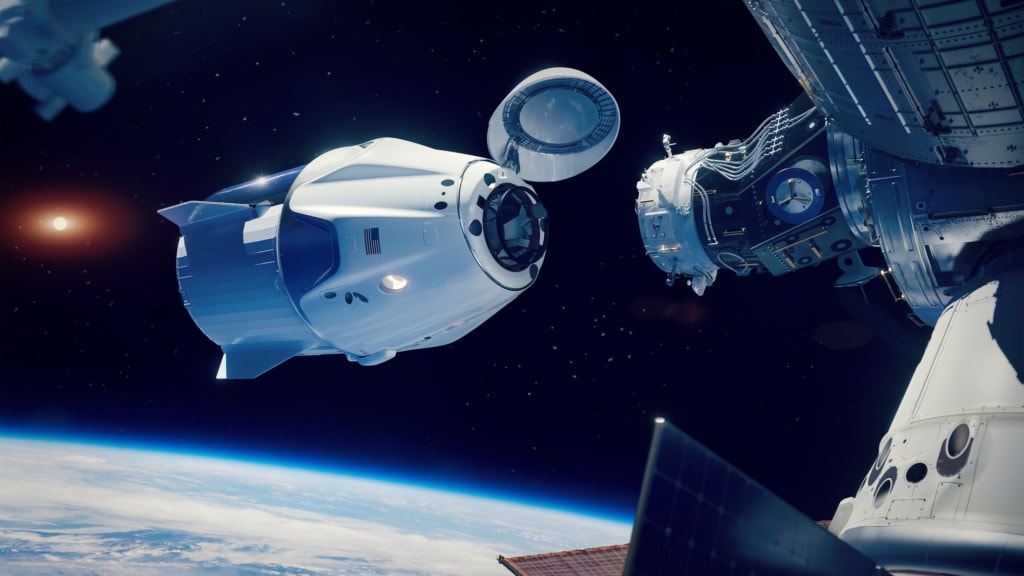
This is capitalism at its best. Invest in people and ideas and get cutting-edge products. Take the space program to the next level with a whole new degree of innovation. (You may also enjoy this article about space enthusiast, Peter Diamandis.)
Your Investment Dollars Could Go to the Moon
Ark Invest, an ETF run by Cathie Wood, has plans to let earth-bound investors hitch a ride on a rocket. If it happens, you'll be able to invest in space exploration under the ticker ARKX. The news sent shares of Virgin Galactic and Maxar Technologies skyward. .
Did NASA Launch a Rocket Today?
When people used to wonder if NASA launched a rocket, it wasn't an everyday occurrence. If they asked, did NASA launch a rocket today, the answer was usually no. Anymore, a rocket launch from Florida today is hardly a blip on the media radar. The CCP most-often launches in Florida at the Kennedy Space Center. NASA oversees every aspect of the commercial program operations, including development. So, it's still safe to say it was NASA that launched any rocket taking off from Cape Canaveral.
Let's Talk About SpaceX
You can't talk about modern space transportation and exploration without talking about SpaceX. Especially because on January 24, 2021, it launched an astonishing 143 satellites on a single rocket.
On February 2, 2021, SpaceX had a bit of a setback. It's SN9 (a prototype of the Starship vehicle in development) performed a test flight. The takeoff was perfect. The landing was not. The prototype failed to slow down enough or to enter the correct vertical positioning to land safely, and crashed in a "massive fireball" in Boca Chica, Texas. Nobody was hurt, as these are unmanned test flights.
Elon Musk's company, also known as Space Explorations Technology Corporation, exists to design and build spacecraft. One of the ultimate goals of SpaceX is reducing the cost of space travel. This means reusable rockets. After all, the most substantial cost involved with jetting into Space is building the rockets and the vehicle to get spaceships into orbit. Since its first attempt in June 2010, SpaceX has had 92 launches, 55 landings, and 37 reflown rockets, primarily using the Falcon 9 reusable two-stage rocket tanks.
Some of the rocket missions were test flights and landings. But since 2012, the Falcon 9 has been shuttling cargo to and from the ISS. With an astonishing success rate, their rocket program has changed the way people and supplies get to and from the space station. SpaceX reduced our reliance on the Russian space program. It also created a partnership with NASA that is yielding incredible results.

Some common questions that might have seemed entirely alien a decade ago that you'll now hear:
What time is the SpaceX launch today?
They schedule launches based on factors such as destination or target, the trajectory of the rocket, and the type of craft. So, launch time is always at the mercy of Mother Nature and pre-flight testing.
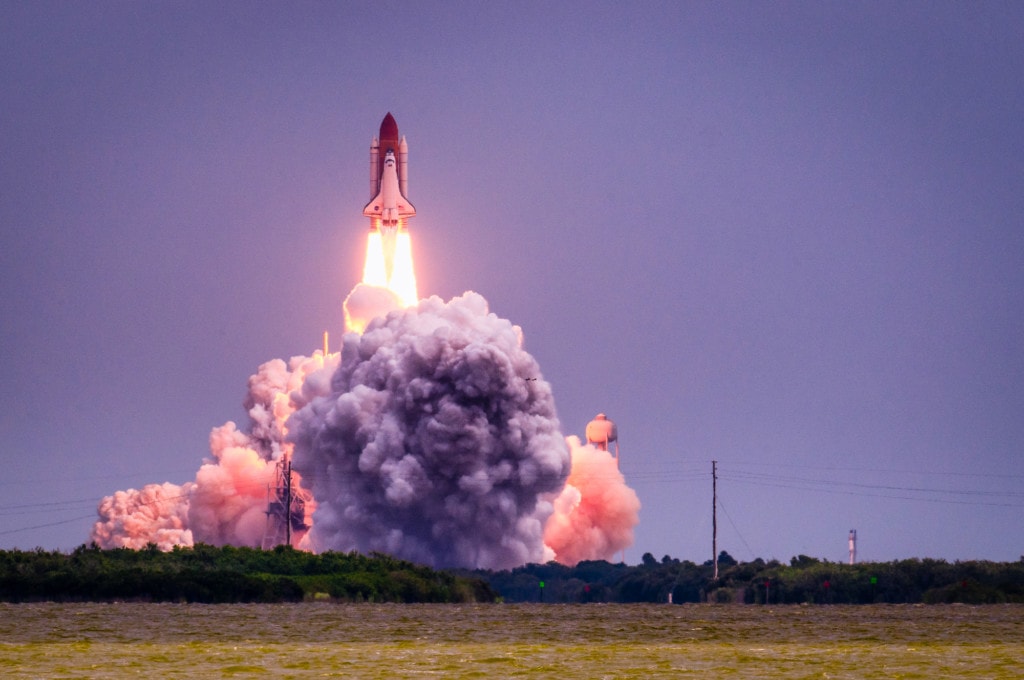
Where is the SpaceX rocket now?
You can keep track of the SpaceX rocket launch schedule, including SpaceX upcoming missions on the Spaceflight Now website.
Was the rocket launch canceled?
You can learn about a rocket launch cancellation on most news outlets. Or go straight to the source on the SpaceX launch page.
Why was the SpaceX launch canceled today?
Rocket launches can cancel for many reasons. The most common is the weather or cloud coverage, but it could be a pre-flight test no-go. To find out why a SpaceX canceled a launch, go to their launch page for more information.
Has SpaceX launch been delayed? Will SpaceX launch today?
Same as the answer to question number four. You can find out everything you need to know about a launch delay on the SpaceX or NASA websites.
Will SpaceX launch be televised?
You can almost always find the SpaceX launches on NASA TV. But you can always find it streaming on the NASA and SpaceX YouTube channels.
Making History – Manned SpaceX Launch
On May 30, 2020, in a historical event, SpaceX launched the Crew Dragon spacecraft from Kennedy Space Center. What's so remarkable about this particular mission? It was the first launch of a commercial spacecraft carrying NASA astronauts. With Robert Behnken and Douglas Hurley aboard, it successfully made its way to the ISS. There, it docked without incident. It's scheduled to return to Earth on August 2, 2020, splashing down in the Atlantic Ocean or the Gulf of Mexico. One of the biggest successes of this mission, outside of safely carrying two astronauts into orbit, was the rocket launcher's safe and triumphant return. Nine minutes after the Crew Dragon liftoff, the Falcon 9 landed a few hundred miles from Cape Canaveral right on target on the SpaceX drone ship.
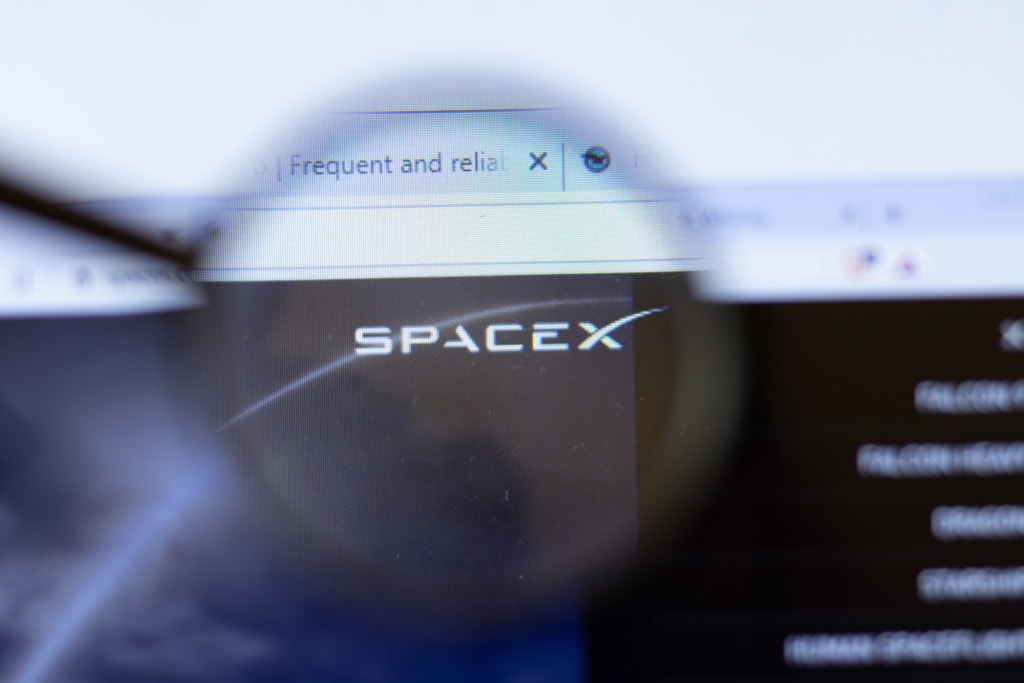
This human-crewed mission to the ISS on a spacecraft with rocket launchers that not only return to Earth but are reusable is significant. It takes us ever closer to traveling further to infinity and beyond. Think about the magnitude of another moon landing or the momentousness of getting humans on Mars. It's all within our reach. And it's all thanks to capitalism and commercial investment in space travel design, building, testing, and innovation from companies like SpaceX.
The Future of Space Travel is Space Tourism
You might be thinking, all of this space stuff is fascinating (because let's be honest, it is!). But what's this got to do with my boarding pass to the interplanetary airways? Private enterprise is what's going to get you there. Your stairway to the stars is being built, one step at a time, by capitalism and companies like SpaceX.
Space tourism isn't new, though just seven non-astronaut civilians traveled on eight missions into orbit. Richard Garriott, a gaming entrepreneur, was nearly the first. But financial challenges sidetracked his plans, temporarily putting his foray into spaceflight on the back burner. However, it did inspire him to co-create Space Adventures in 1998. That's a company designed to coordinate opportunities for private space travel. In fact, Space Adventures helped secure travel for every space tourist since its inception, including:
2001 - Dennis Tito was the first space tourist.
He's got a degree in Astronautics and Aeronautics. After training in Russia with cosmonauts, Tito bought his own ticket to travel on the Soyuz. He spent eight days orbiting the Earth with the crew of the International Space Station.
2002 – Mark Shuttleworth was the second to fly on the Soyuz.
Shuttleworth spent eight months training and undergoing medical exams to prepare for his trip. The eight-day trip aimed to educate South African students by conducting research and experiments. The experiments included a study of how the cardiovascular system responds to microgravity. Plus, they studied the effects of zero-gravity on how embryos and stem cells develop. Finally, they attempted to view the virus structure of HIV proteins through crystallization.
2005 – Gregory Olsen was the third Space Adventures client.
Also flying on the Soyuz to the ISS, he prepared with 900 hours of training. During his stay in Space, Olsen also participated in research and experiments, primarily on how the body responds to microgravity. He used amateur radio to connect to high school students in New York and New Jersey.
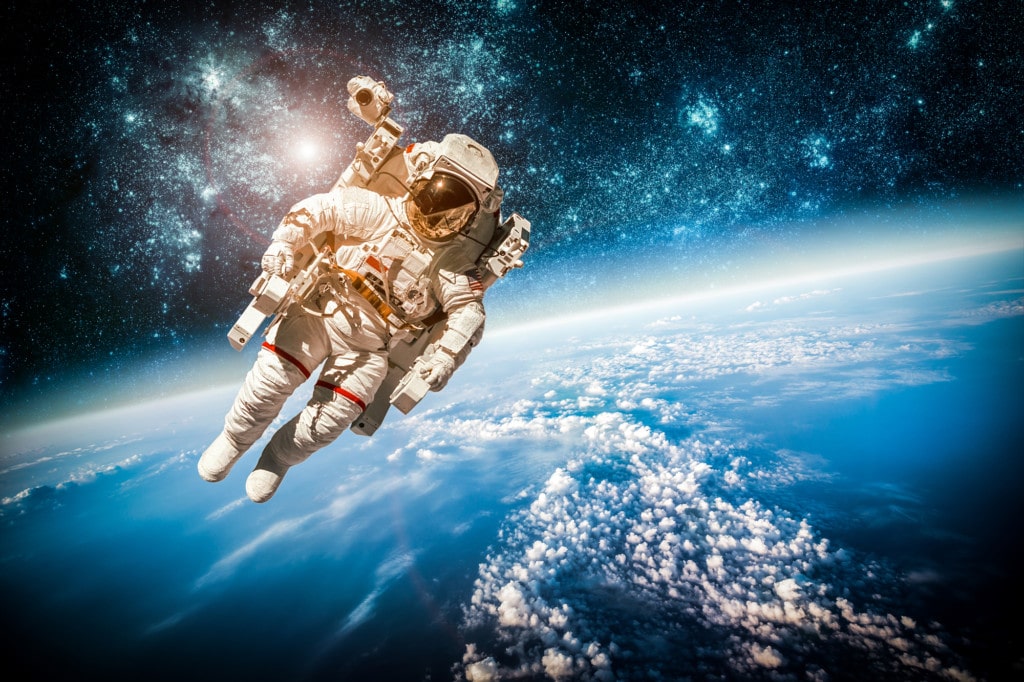
2006 – Iranian born Anousheh Ansari was the fourth to travel in Space.
She emigrated to the United States in 1984. There, she studied and earned degrees in computer science and electrical engineering. She flew on the Soyuz to the ISS and conducted experiments to determine the ramifications of radiation on astronauts and crew members on the Space Station.
2007 and 2009 – Hungarian Charles Simonyi is the only civilian to travel to the ISS twice.
As a Microsoft executive and a key player in Word and Excel development, he had a vested interest in promoting science and space travel to youth around the world. Advancing civilian space travel was his primary mission and driving force behind his space travels.
2008 – Richard Garriott finally travels in Space!
After waiting a decade for his chance to board the Soyuz to the ISS, Garriott got to exchange his $30 million-dollar ticket for a once-in-a-lifetime flight.
2009 – Guy Laliberté was the eighth, most recent, and last space tourist to the International Space Station.
He's the founder of Cirque de Soleil. He took a $41 million, 12-day trip to the International Space Station, dedicating his space travel to global water issues. Interestingly enough, according to the National Post article, "Cirque de Soleil Founder Can't Recover $41M Spent on His Space Flight as a Business Expense: Appeal Court," Laliberté unsuccessfully tried to write the trip off as a business expense. Though he lost his court appeal, he still believes the trip was worth every penny.
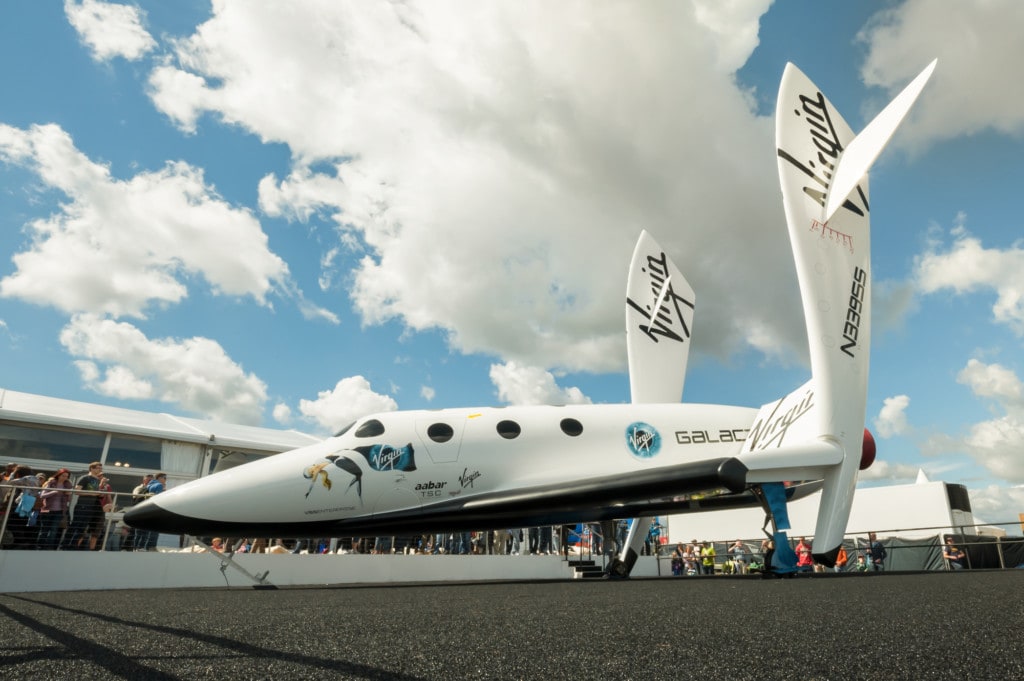
What's Next for Space Tourism?
Most people aren't going to become astronauts. After all, most can't afford many millions of dollars to realize their dream of space travel. So, what's next? How are people supposed to board their space flight if it's such an impossibility? The next steps in space tourism will get people ever closer to flying outside the confines of Earth. And while you might not be able to get a fly-anytime fare, some options will cost substantially less than a typical stay on the ISS and require a lot less training.
There are currently at least five companies working toward launching tourists into space. They include:
Let's take a look at each company and its plans for space tourism in the coming years.
SpaceX and Space Adventures
We've seen what SpaceX can do to get humans into space. Crew Dragon was an incredible feat and a huge success, but it's just the start. With their tagline "making life multi-planetary," their goal is to send humans into orbit, back to the moon, to Mars, and even beyond. Those are lofty ambitions. But with the help of capitalism, it's going to happen. It's within our grasp.
SpaceX's goals are no less tenacious when it comes to giving civilians the experience of space travel. Working with Axiom Space, a Houston start-up responsible for the logistics of the trip, the plan is to send three people on a ten-day trip to the ISS. This will be the first mission to the International Space Station from an entirely private enterprise. While this is a genuinely unmatchable experience, it comes with a hefty price tag of $55 million. This is obviously not an offering available to most people. That's why the company has other space projects on the horizon.
In February, Space Adventures announced their agreement to work together with SpaceX. They'll send private citizens on safe, exciting, unique flights to Space. They aim to launch their first tourists into low-Earth orbit in 2021 on the Crew Dragon spacecraft for three to five-day journeys. The passengers will get to see planet earth from above, with a view few private citizens have ever seen. It's another step toward offering regular, affordable spaceflight experiences to more people in the future. These excursions would include:
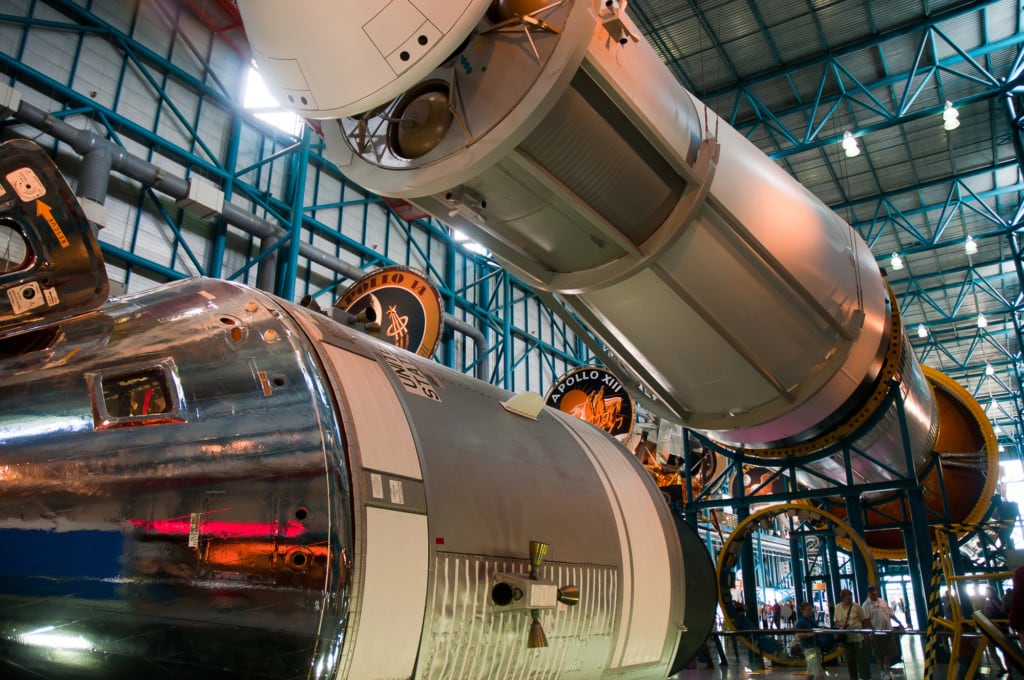
Reduced training time
Skip spending months and months in astronaut training. Instead, you'll spend time on American soil, focusing primarily on the Dragon spacecraft.
Higher orbital altitude
Forget the restrictions that come with ISS docking. The Dragon can reach higher heights. You'll see more of Earth, including the curve of the horizon and a greater expanse of the planet at one time.
Easier logistics and scheduling
Bypass NASA and the space program. Scheduling and logistics are easier, with more control to meet the needs of travelers.
Travel in American technology
This space tourism adventure would take place aboard the fully American-made Crew Dragon spacecraft. It'll launch using the Falcon 9 rockets. This is the same equipment used to carry supplies and equipment and NASA astronauts to and from the ISS.
All the Rest
SpaceX is far and away ahead of the pack when it comes to the average Joe jumping on a jet propulsion-launched spaceship and heading out past the Earth's atmosphere. But they're not alone. If we're talking about how capitalism helps make space tourism possible, we can't leave out the accomplishments and status of other programs in the works by these other companies. Let's take a look at where they stand.
Virgin Galactic
This one's British billionaire Richard Branson's pet project. Virgin Galactic, has set its sights on space travel as a path to expanding science and human ingenuity. Plus, it aims to find a new perspective with which to view our ongoing issues on Earth. Their mission? To democratize Space. They'll give space flight access to everyone with the first commercial airline for Space. It's called a spaceline, which is their reusable aircraft. Their two ships include the SpaceShipTwo and the WhiteKnightTwo. A private company aiming to operate commercial service for private citizens built them both. There have been some setbacks in testing and development. But Virgin Galactic recently completed a successful glide flight. It's set to unveil the SpaceShipTwo cabin design shortly.
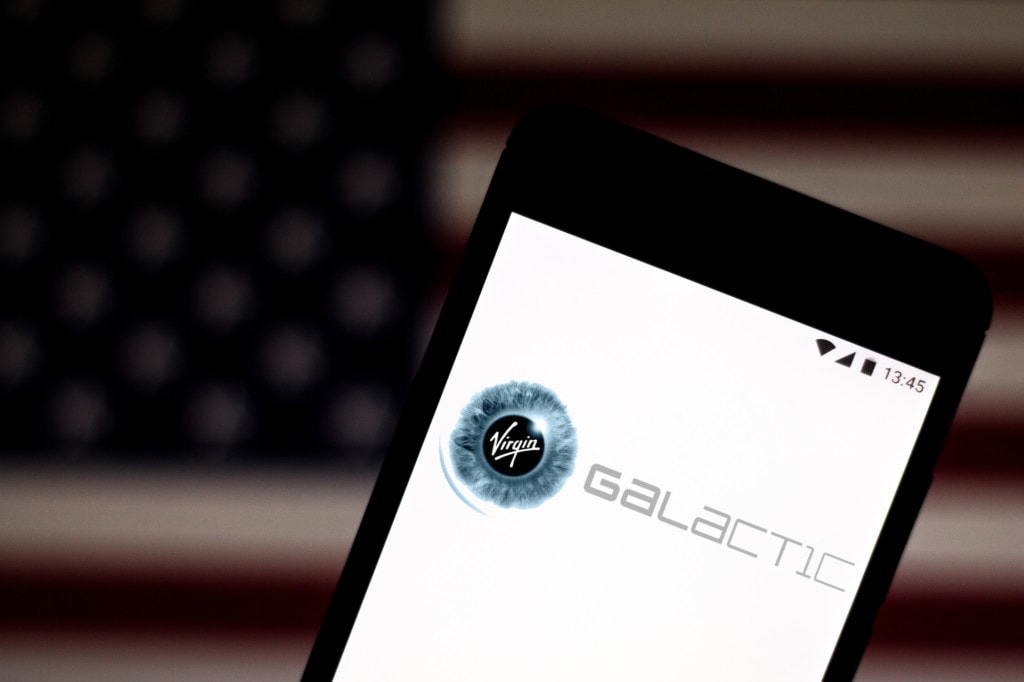
Blue Origin
Amazon CEO and mega-billionaire Jeff Bezos started Blue Origin. It focuses on "building a road to space so our children can build the future." This mission is the guiding force behind their program. So far, it's got two operational reusable space vehicles, the New Shepard and the New Glenn. That's a nod to the original space pioneering astronauts, of course. Blue Origin wants to tap into the resources available in Space to save Earth for future generations, starting with space tourism.
Unlike Virgin Galactic, which has started taking deposits for space flights, this space company plans to sell tickets. You can enjoy an 11-minute ride on a suborbital spacecraft for between $200,000 and $300,000. Bezos's company is still firmly in the testing phase but celebrated its first launch on January 14, 2021. The hope is to put people on spacecraft and into the air by 2024.
Space Perspective
Putting a whole new twist on viewing the Earth from far above is a company called Space Perspective. They want to put passengers above the clouds, but in luxury and comfort, and without the rocket launch experience. They'll use a spaceship called Neptune, a pressurized cabin attached to a giant hydrogen-filled balloon. Passengers will spend two hours slowly traveling up to an altitude of 30 miles. Cruising altitude rests above most of the Earth's atmosphere, but before the point of anti-gravity. There, travelers will have two hours to take in the view.
With large windows, a bathroom, and a bar, not only will they be able to see the Earth from the vantage point of an astronaut, but they can do it in comfort. According to CBS News in "Company Plans Space Tourism Flights in Hight-Altitude Balloon," you can have a wedding, a corporate event, or even a meeting of political leaders aboard the Neptune. When it's time to head home, you'll descend as slowly as you went up. Then, you'll splashdown in the Atlantic Ocean for retrieval by a nearby ship.
Working out of facilities at Kennedy Space Center, Space Perspectives plans to charge around $125,000 per person for the six-hour flight. The capsule will hold eight people as it travels to the edge of Space on each flight. Per the article "Need to Get Away? Company Plans Passenger Flights to Edge of Space from Cape Canaveral," Space Perspective flights will require very little training, perfect for the casual space tourist. With the first crewless test flights starting in 2021, they're already taking reservations for seat allocations, though they require no money upfront.

Pack Your Bags; Your Space Flight is Leaving Soon!
There's a general consensus among the lucky few who have ventured into Space that it is life changing. There is something called the overview effect, a term coined by author and space philosopher Frank White. It's something that astronauts and Space tourists experience when they view Earth from orbit, from the perspective nearly all other humans will never experience.
Up there, you see the Earth against the blackness of the Universe. It's more than an overwhelming emotional encounter, but a shift in one's perspective, a cognitive shift in awareness, not just of their own lives, but of life in general. It offers a new understanding of Earth's scope, the lack of borders, the beauty and fragility of the planet, and the life it sustains. From this perspective, it's easy to see that people are truly all in it together. We're all connected, not just to each other, but to life, nature, and the world. It's an overview of the world we live in, the only planet we know.
The Takeaway
We, the human race, can move beyond the words, beyond the term, beyond that indescribable feeling. How? Through commercial space flight and space tourism. People all over the world want to have that feeling, want to have that experience. It's impossible to get it while Earth-bound. But it is possible to feel the profoundness of the overview effect by traveling to Space, to low-Earth orbit, or even to a place just inside the bounds of the atmosphere. It's possible for regular people, citizens of Earth, to feel the overview effect.
Every day, people work on getting humans into Space so that, one day, the rest could join them. With the help of capitalism and private enterprise, the coming together of ideas, ingenuity, people, and minds makes it possible to touch the stars.
A little closer to home, capitalists make astonishing breakthroughs to improve everyday life for communities they serve every single day. Space travel pioneers and entrepreneurs link arms to create possibilities that are out of this world. Through collaborative capitalism, earth-bound entrepreneurs create a better world right here and now.
If you’ve been kind of drifting, all alone in your space as an entrepreneur, stop. You were never meant to go on this journey alone. Together, we can accomplish so much, better and faster. Come join us in The One Percent and let’s see what we can do… together.
